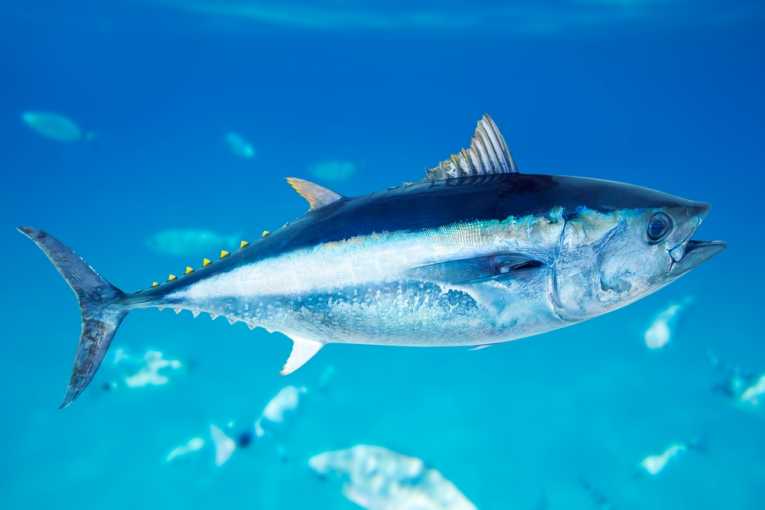141 per cent of the permitted eastern Atlantic bluefin tuna catch has been landed in 2010. This figure is another 10% higher than the previous survey in 2008 and still takes no account of missing black market bluefin. Bluefin is a greatly-endangered giant fish, designed to predate rather than be predated. Its speed and endurance are unmatched, with enhanced drag reduction, warm blood and a torpedo-like body, two metres of muscle. While the western atlantic bluefin grows slowly and is even more endangered, it is believed, the eastern bluefin stock matures after four years and is fished excessively in the Mediterranean and the Atlantic. One caught in Nova Scotia had a mass of 479 kg (1496 lb)but few reach that size nowadays, even with their 40 year lifespan. They swim across the Atlantic several times a year, at speeds up to 70 kph (43 mph), feeding on a rich and varied diet, ranging from plankton to fish, Crustacea, and squid. With such a "portfolio", their influence on food webs is unmatched, rather like a large eagle or a tiger.

Four tuna via Shutterstock
The Pew Environment Group review tuna catches regularly as one of their many campaigns to restore threatened ecologies. They have previously achieved some success, with the dolphin - in - tuna-cans campaign. Member governments of ICCAT (the International Commission for the Conservation of Atlantic Tuna) adopted strong enforcement strategies in 2008, designed to combat seine netting, lower catch limits and document catches and trading. The vast majority of the catch ends up in Japan as sashimi, as type of sushi. The price and rarity have now combined to produce a fishing nightmare, not least for the animal itself. One fish has been known to fetch more than $173,000 in Japan, and that price only goes up.
Worldwide demand is still increasing, meaning that education is one of the outlets needed to progress and save the species. In November, as ICCAT meets in Istanbul, compliance is the main issue, with many nations, such as France, Malta, Croatia, Spain and Italy flaunting strict rules on driftnets (purse seine nets)and failing to admit illegal catches. With a quaint form of "ranching" popular in many countries, fattening up the catch actually enables "fishermen" to avoid quotas. EU and US collaboration on such migrant fish has been essential for decades, and began on September 7th, with these two agreeing to combat illegalities. Pew Group have produced a helpful, "Mind The gap," document which looks especially at reaction by the industry after the 2008 measures. The excellent graph delineates exactly what has happened as far as "The Gap" is concerned. In essence, 70,646 mt of bluefin were traded, against an allowed 35, 306 mt over two years since the agreement. Conveniently for non-statisticians, that's double!
What must happen for governments to have any control is that electronic catch documentation is introduced, and the worst offenders criminalised by having their vessels confiscated. Many photographs of illegal fishing, etc. Are visible on the ref. above.
For many years, the Mediterranean fishery was considered mismanaged and out of control. In 2008, ICCAT called the situation a "travesty of fisheries management." "For more than a decade, the Mediterranean was heavily fished by an oversized industrial purse-seine fleet, flouting ICCAT's catch limits and compromising the sustainability of the fishery and the livelihoods of traditional, smaller-scale bluefin tuna fishermen operating legally." From the mouths of traditional fishermen, maybe we can extract the truth.










